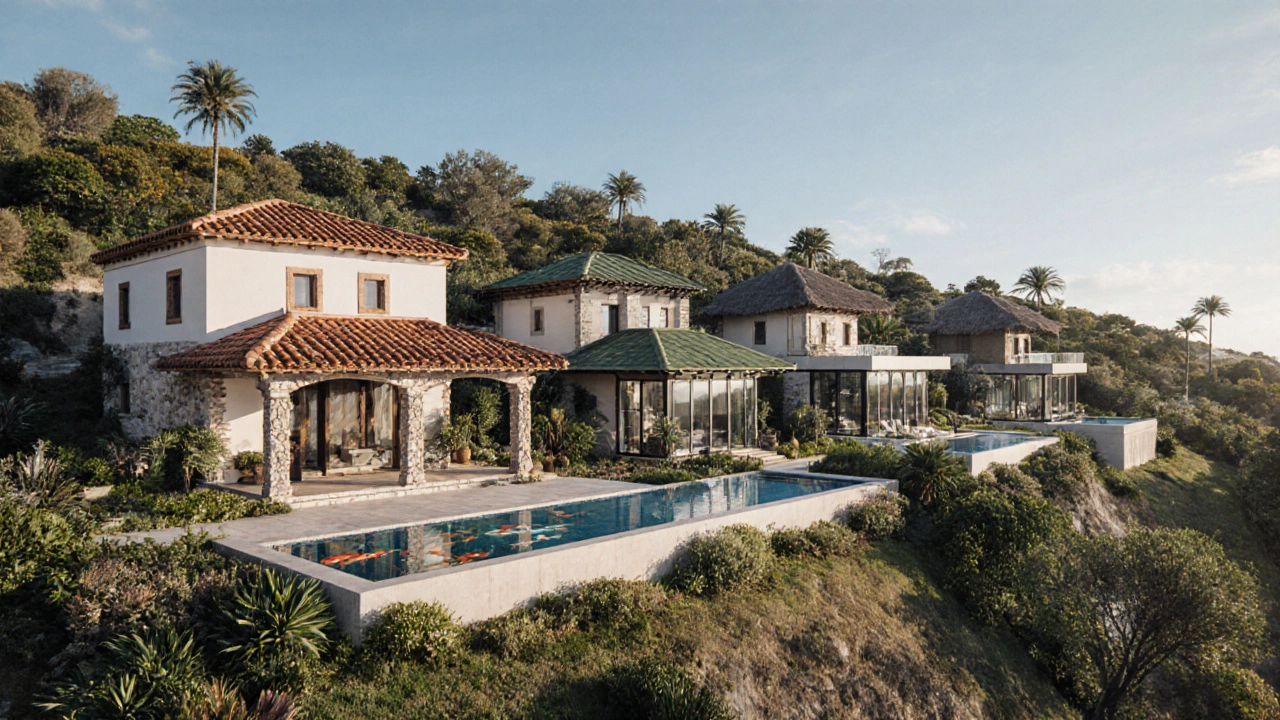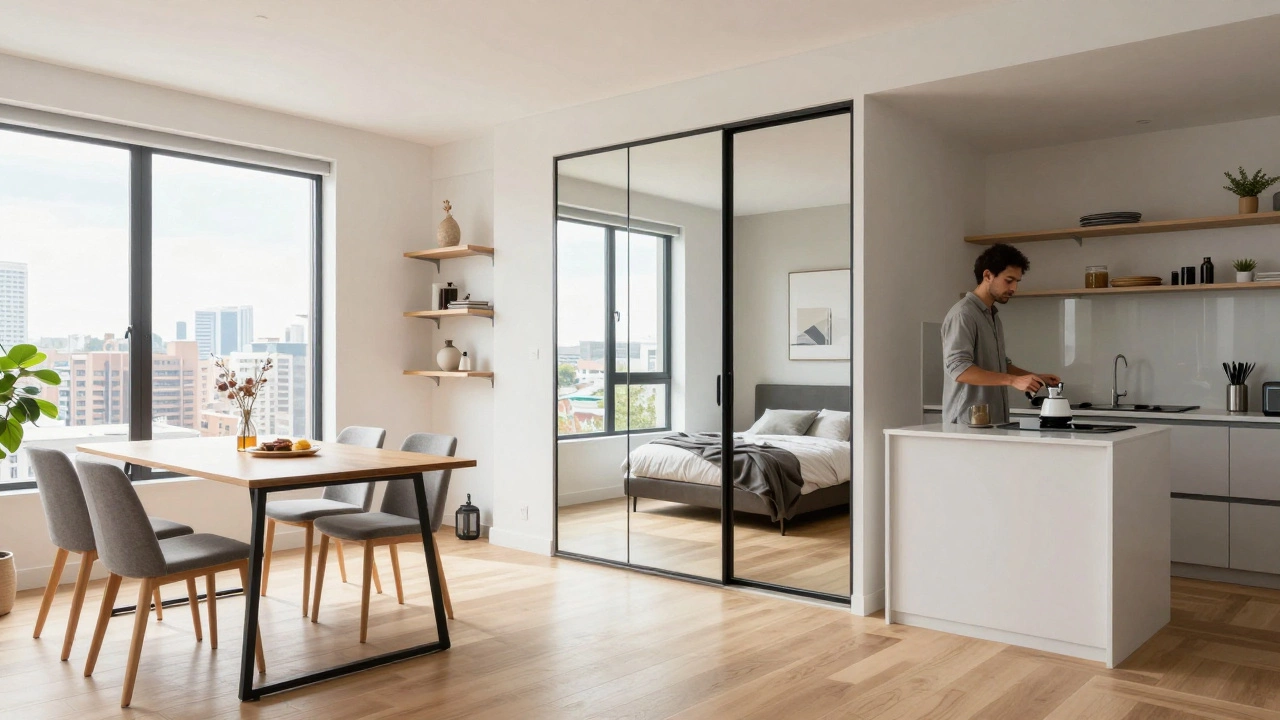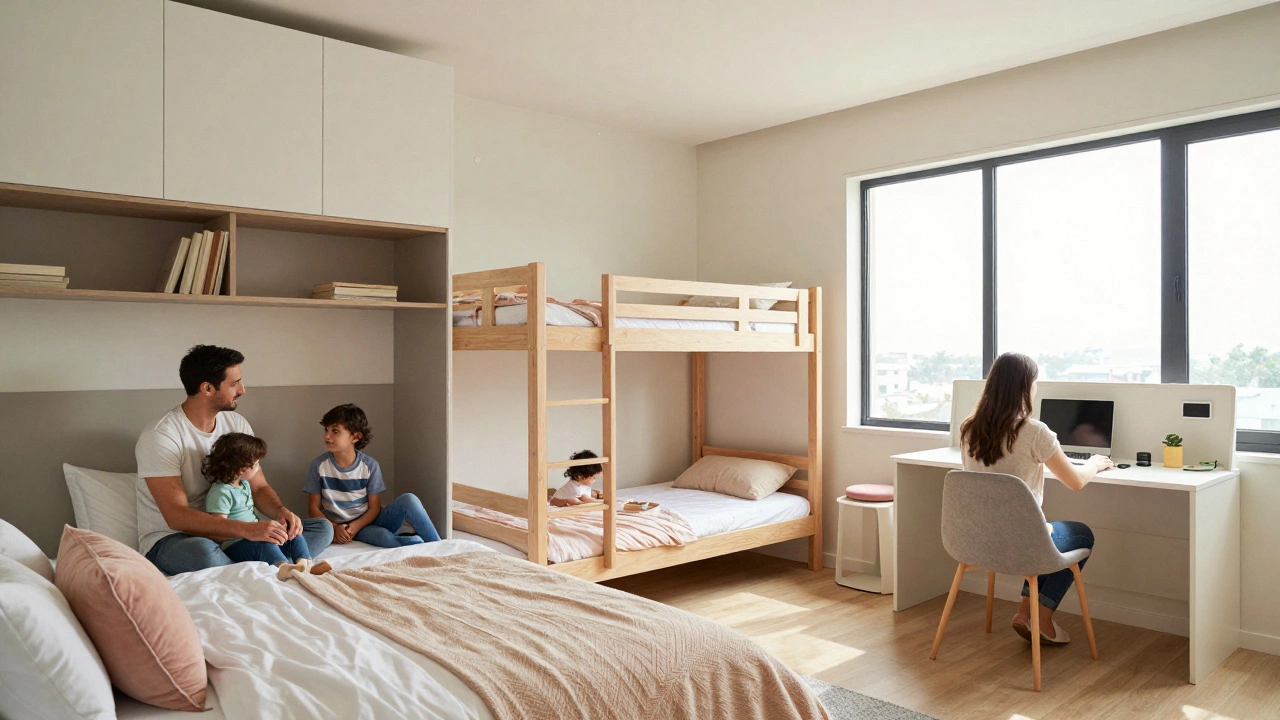Villa Style Identifier
Answer a few questions about a property's features to identify its architectural style. This tool is based on the regional villa styles described in our guide.
Key Takeaways
- Villas come in distinct regional styles-Mediterranean, Tuscan, Modern, Asian, and Beachfront.
- Common floor plans include open‑plan living, private courtyards, and multi‑level layouts.
- Signature features such as tiled roofs, expansive verandas, and infinity pools set villas apart.
- Climate and locale drive material choices and landscaping.
- Use a quick visual checklist to spot a villa in property listings.
Ever walked past a grand house and wondered if it’s a villa or just a fancy mansion? The line can blur, but most villas share a set of visual cues that make them instantly recognizable. Whether you’re scrolling through listings, planning a vacation home, or simply daydreaming about luxury living, knowing what villas look like helps you filter the noise and focus on properties that truly fit the bill.
Villa is a luxurious, standalone residential property typically featuring spacious grounds, multiple bedrooms, and premium amenities. Villas are designed for comfort, privacy, and often showcase architectural flair that reflects their region’s culture and climate.
Defining a Villa: Core Characteristics
The word “villa” originally described Roman countryside estates, but today it signals a high‑end residence that offers more space than a typical house and less density than an apartment block. Key attributes include:
- Detached structure with its own plot of land.
- Two or more stories, often with a mezzanine or loft.
- Private amenities such as a swimming pool, garden, or guest house.
- Architectural emphasis on aesthetics-think decorative columns, tiled roofs, or floor‑to‑ceiling windows.
Common Exterior Styles
Villas adapt to local traditions, resulting in recognizable style families. Below are the most prevalent.
Mediterranean Villa
Think sun‑drenched white walls, terracotta roof tiles, and wrought‑iron balconies. These homes often feature a central courtyard that brings light into every room. Clay tiles provide natural cooling, while arches frame doorways for an elegant look.
Tuscan Villa
Rooted in the Italian countryside, Tuscan villas display stucco exteriors, low‑pitch red roofs, and stone pillars. Large windows open onto rolling vineyards or olive groves, and exposed wooden beams are common inside.
Modern Villa
Sleek lines, glass facades, and minimalist landscaping define the modern villa. Flat roofs often hide solar panels, and the indoor‑outdoor flow is achieved with sliding doors that open onto terraces and infinity pools.
Asian‑Influenced Villa
In places like Thailand or Bali, villas blend local timber work with open‑air pavilions. High‑pitched roofs made of thatch or clay, plus abundant bamboo, give a tropical vibe. Water features such as koi ponds are common focal points.
Beachfront Villa
Designed for coastal living, these villas boast large glass walls to capture sea views, raised foundations to dodge tides, and decks equipped with loungers. Materials resist salt corrosion-think stainless steel railings and concrete with marine‑grade additives.
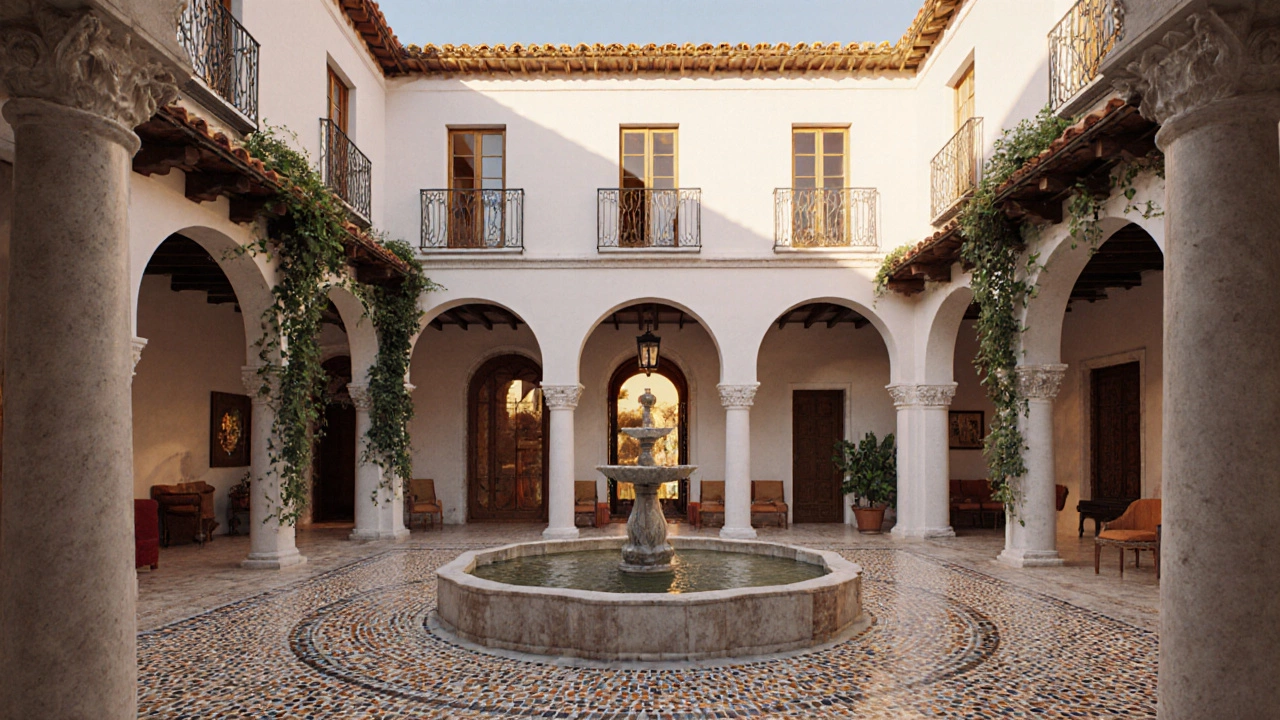
Typical Floor Plans: Inside the Villa
Villa floor plan layouts balance privacy and entertainment. A classic arrangement includes:
- Grand entrance hall that leads to a formal living area.
- Open‑plan kitchen and family room that opens onto a patio or garden.
- Private wing with master suite, often featuring a walk‑in closet and en‑suite bathroom.
- Guest bedrooms placed on a separate floor or wing for quiet.
- Optional spaces such as a home office, gym, or wine cellar.
Multi‑level villas frequently use a mezzanine level for a study or media room, taking advantage of high ceilings and natural light.
Signature Architectural Features
Beyond style, certain elements signal you’re looking at a villa:
- Roof type: Clay tiles, thatch, or flat roofs with green landscaping.
- Verandas and loggias: Covered outdoor walkways that blur the line between inside and outside.
- Columns and arches: Classical motifs that add grandeur.
- Pools and water features: Infinity pools, plunge pools, or decorative fountains.
- Landscaping: Manicured lawns, olive trees, or tropical gardens that complement the architecture.
Regional Variations: Climate Drives Design
Climate isn’t just an afterthought-it shapes every aspect of a villa’s look. In hot, dry regions, thick walls and shaded courtyards keep interiors cool. In humid tropical zones, raised floors and ample ventilation prevent moisture buildup. Coastal villas prioritize corrosion‑resistant materials, while mountain villas incorporate stone foundations to anchor the structure against wind.
| Region | Roof | Primary Material | Typical Size (sqft) | Signature Outdoor Element |
|---|---|---|---|---|
| Mediterranean | Terracotta tiles | Stone/Stucco | 3,000-6,000 | Courtyard with fountain |
| Tuscan | Low‑pitch red tiles | Stucco/Stone | 2,500-5,500 | Olive grove |
| Modern | Flat or green roof | Concrete/Glass | 4,000-8,000 | Infinity pool |
| Asian‑Tropical | Thatched or pitched clay | Bamboo/Timber | 2,000-5,000 | Koi pond |
| Beachfront | Flat reinforced concrete | Marine‑grade concrete | 3,500-7,500 | Ocean‑view deck |
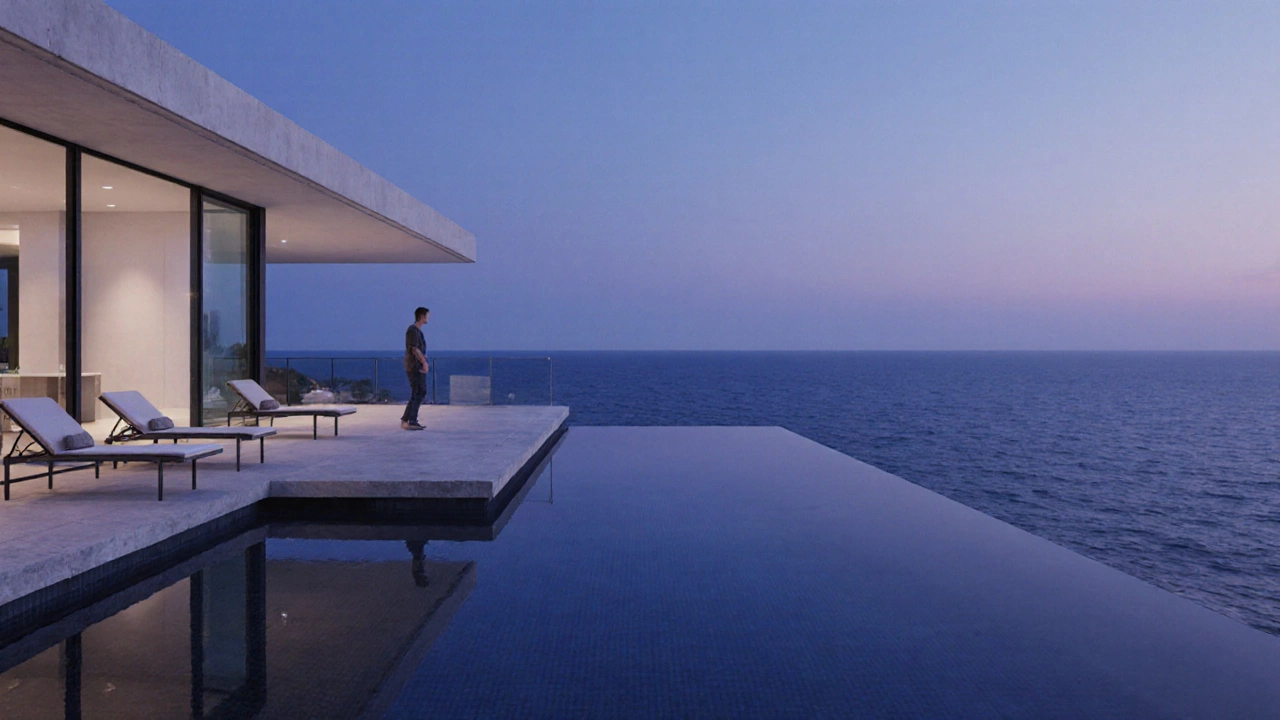
How to Spot a Villa in Real‑Estate Listings
When browsing portals, keep an eye out for these tell‑tale signs:
- Listing describes “detached,” “standalone,” or “single‑family luxury home.”
- Square footage exceeds 2,500sqft and includes multiple bedrooms and bathrooms.
- Mentions of private pool, garden, or guest house.
- Photos show expansive façades, roof tiles, and outdoor terraces.
- Price per square foot aligns with high‑end market rates for the area.
Often the word “villa” is paired with a location-“Tuscan villa in Napa Valley” or “Beachfront villa in Phuket”-which instantly clues you into the style you’ll encounter.
Visual Inspiration: Iconic Villas Around the World
Here are a few real‑world examples that illustrate the diversity of villa architecture:
- Villa d'Este (Italy) - A Renaissance masterpiece with terracotta roofs, symmetrical gardens, and elaborate fountains.
- Villa Nohan (Bali) - A tropical retreat featuring open‑air pavilions, thatched roofs, and a central koi pond.
- Modern Villa by Zaha Hadid (Dubai) - Curved glass façade, floating staircases, and a rooftop infinity pool.
- Beachfront Villa in Malibu - Floor‑to‑ceiling windows framing Pacific views, raised concrete slab, and a wrap‑around deck.
Checklist for Buyers: What to Verify Before Signing
- Confirm the property is truly detached and sits on a private plot.
- Inspect roof condition-especially if tiles are original.
- Assess the quality of outdoor amenities (pool filtration, garden irrigation).
- Review local zoning laws for any restrictions on expansions.
- Check for adequate parking-many villas include a separate garage or driveway.
Running through this list helps you avoid surprises and ensures the villa lives up to its promise of luxury and privacy.
Frequently Asked Questions
What differentiates a villa from a mansion?
A villa is usually a single‑family home on a private plot with a focus on outdoor living spaces, while a mansion may be part of a larger estate, sometimes with multiple buildings and formal service quarters.
Are villas always expensive?
Not necessarily. Price depends on location, size, materials, and amenities. A modest villa in a rural area can be far cheaper than a high‑rise apartment in a city center.
Which villa style suits hot climates best?
Mediterranean and Asian‑tropical styles excel in hot climates. Thick walls, shaded courtyards, and tiled roofs absorb heat slowly and promote natural cooling.
Do I need a special permit to build a villa?
Building permits are required in most jurisdictions. The process varies by region, but you’ll typically submit plans showing setbacks, height, and utility connections.
Can a villa be part of a gated community?
Yes. Many upscale gated estates consist of villas that share security and common amenities while retaining private plots.
